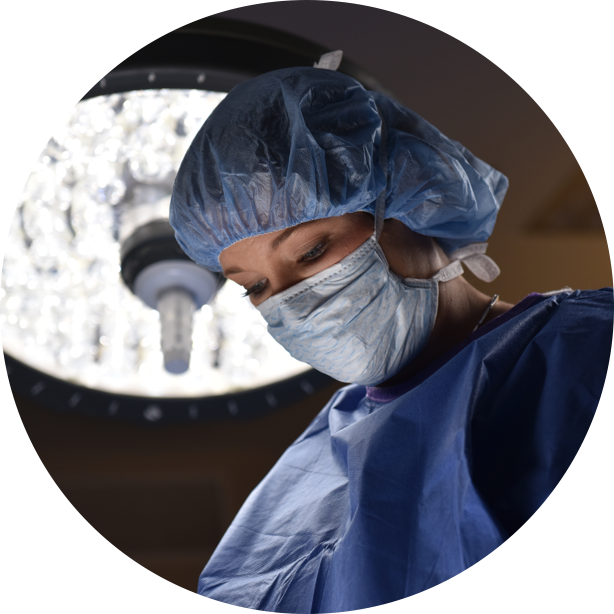
Eyelid Surgery
Blepharoplasty is the medical term for eyelid surgery that some people choose to have to improve their appearance. A plastic surgeon can also perform eyelid surgery to correct functional problems, such as loose or sagging skin having a negative effect on vision. Patients can undergo this procedure on the upper eyelids, lower eyelids, or both. The most common cosmetic reason to undergo blepharoplasty is to erase signs of aging near and under the eyes. The aging process causes a loss of fat volume in the face and around the eyes that often leads to a tired, sunken appearance. Some of the specific issues that eyelid surgery corrects include:
- Fine wrinkles and excess skin underneath the eyes.
- Sagging and loose skin on the upper eyelid that interferes with its natural contours. Since this problem can disturb vision, insurance companies may offer at least some coverage for surgery because it is a medical necessity.
- Bags under the eyes that make a person look chronically tired or sad.
- Puffiness in the eyelids due to excessive fatty tissue.
- Droopiness in the lower eyelids that cause exposure of the white part directly below the iris.
People who are good candidates for eyelid surgery are those without serious eye disorders, medical conditions that can slow post-surgical healing, or any disease that is potentially life-threatening. Additionally, it is important to refrain from smoking several weeks before and after the surgery.
Isn’t it time to take the next step?
CONTACT US
UPMC Western Maryland Plastic Surgery
12502 Willowbrook Road, Suite 460
Cumberland, MD 21502
Hours of Operation:
UPMC Outpatient Center
23789 Garrett Highway
McHenry, Maryland 21541
Hours of Operation:
HELPFUL LINKS

The Procedure for Eyelid Surgery
After the patient is comfortably sedated, the plastic surgeon makes an incision across the crease of the top eyelid. The placement of the incision is intentional in order to conceal the resulting scarring in the eyelid’s natural contours. Immediately after making the incision, the surgeon removes or repositions fat deposits, tightens muscles near the eyes, and trims away excess skin. The incision for the lower eyelid goes across the lash line.
An alternative technique available for the lower eyelid is the transconjunctival incision. No skin is removed with this procedure, although the surgeon does remove or redistribute the excess fat from the lower eyelid.
For the final step of all types of eyelid surgeries, the plastic surgeon closes the incisions with sutures, skin adhesive, or surgical tape.
Recovery from Eyelid Surgery
Immediately after completing the eyelid surgery, the surgeon lubricates the patient’s eyes with a special ointment and may also apply a dressing to the area. Blurry vision is common after surgery, but it only lasts for a short time. Once the anesthesia wears off, the eyes may briefly feel hot, tender, and tight. Each person has a different reaction to coming out of anesthesia, although chills and nausea are commonly reported. Since the grogginess may remain for a while, it is essential to arrange for a ride home after eyelid surgery.
The patient will need to return to the plastic surgery department of Western Maryland Health System a day or two after surgery. After that, he or she should plan to rest as much as possible for up to 10 days. Most people require only non-prescription pain relief during the recovery period. However, all patients must avoid non-steroidal anti-inflammatory drugs such as aspirin, ibuprofen, or naproxen since they increase the risk of post-surgical bleeding.
Reading and watching television can be challenging for the first few days after eyelid surgery but it will get easier. The patient needs to avoid strenuous activity for 10 days and contact sports for about three weeks. Those who normally wear eye makeup can put it on again in one to two weeks. Eyeglasses can be worn immediately after surgery, although contacts must be avoided until recovery is complete. Patients who experience difficulty sleeping should try using a few extra pillows to elevate the head. Lastly, keeping the eyes covered when going outside and liberally using artificial tears can speed healing time.

Schedule a Consultation

CONTACT US
UPMC Western Maryland Plastic Surgery
12502 Willowbrook Road, Suite 460
Cumberland, MD 21502
Hours of Operation:
UPMC Outpatient Center
23789 Garrett Highway
McHenry, Maryland 21541
Hours of Operation:
UPMC Western Maryland Plastic Surgery
Plastic Surgery With A Personal Touch
Western Maryland Medical Arts Center
12502 Willowbrook Road, Suite 460
Cumberland, MD 21502
UPMC Outpatient Center
23789 Garrett Highway
McHenry, Maryland 21541
